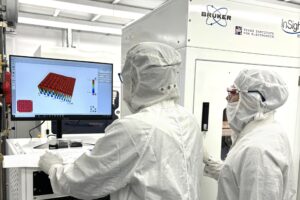New Zealand is an earthquake hot spot. A 6.5-magnitude tremor shook Wellington, the country’s capital located at the southern tip of New Zealand’s north island, on July 21. But this most recent seismic event wasn’t as devastating as the earthquake that shook Christchurch, New Zealand’s second-largest city, in 2011.
Since then, as many as 7,500 homes have been abandoned due to earthquake damage, and 30 percent of the structures in Christchurch’s central business district, including more than 20 buildings 15 stories and higher have been demolished.
This area on New Zealand’s south island has one potentially fatal flaw: It’s sitting on a bowl of jelly deep, sandy, swampy sediment on top of bedrock that traps and compounds the earthquake’s vibrations. This type of soil can liquefy during an earthquake, losing strength and stiffness, causing buildings to sink into the ground and crack apart.
In late 2012, Brady Cox, a civil engineer in the Cockrell School of Engineering, traveled to Christchurch where he used strategically placed arrays of seismometers to record ambient soil vibrations (microtremors) in an attempt to profile the deep, soft sediments underlying the city. He returned in mid-March with T-Rex, a massive, 64,000-pound shaker truck, to verify his findings.
“The information we gather in New Zealand will help us make sure that we are doing everything we need to do in the U.S. We haven’t had a large earthquake in the U.S. in a number of years,” says Cox, who returned in mid-July from another research trip in New Zealand. “What we learn in Christchurch can be applied to other cities in seismically active areas that haven’t been hit by large earthquakes recently. As earthquake engineers, we have to take the opportunity to learn hard lessons from the past in order to prevent them from happening again in the future.”

Cox’s project in Christchurch is one of many with The George E. Brown Jr. Network for Earthquake Engineering Simulation (NEES), a national network and simulation resource, funded by the U.S. National Science Foundation and led by Purdue University. NEES has 14 such sites across the country. NEES at UT Austin, led by Civil Engineering professor Kenneth H. Stokoe, is the only site with truck-mounted mobile shakers that can be used to simulate earthquake waves. UT Austin’s T-Rex is the only known operating tri-axial vibroseis truck in the country.
Once on site in Christchurch, T-Rex pounded and thudded the earth, changing its vibration orientation from vertical to horizontal with the push of a button, to generate various seismic waves that are recorded by sophisticated sensors placed along the ground surface. The seismic data gathered with T-Rex will inform engineers, on an area-by-area basis, how to rebuild structures in Christchurch to resist future earthquakes.
“Designing a quake-resistant building starts with the soil,” Cox says. “The stiffness and layering of the soil has a profound effect on the strength of shaking felt during an earthquake. The soil stiffness is quantified by a sheer wave velocity, the speed at which waves generated by the earthquake travel through the soil. Soft soils with slow shear wave velocities tend to amplify shaking during an earthquake. Information about the shear wave velocity of the soil is used to inform engineers and government officials about what is needed to design quake-resistant structures in given areas.”
Engineers are confident they can design structures that can withstand earthquakes in New Zealand, the U.S. and other places with similar geotechnical challenges. But first, engineers need to know more about the soil in each area. T-Rex can give them that vital information. Then, a foundation and structural system best suited for the particular site and building type can be designed.
The new techniques and experiments that Cox and his team ran in Christchurch will ultimately be used to characterize earthquake zones in the U.S. with deep, soft soil deposits areas including the Los Angeles Basin, the Seattle Basin, the Salt Lake Valley and the New Madrid Seismic Zone.
Besides losing most of its downtown and several neighborhoods, 185 lives were lost in the Christchurch earthquakes. Additionally, estimates of the economic impact of the Christchurch earthquakes range from $35 billion to $50 billion, approximately a quarter to one-third of the entire gross domestic product for New Zealand.
“I know we can help to prevent this type of damage,” he says. “Our hope is that this research will benefit all areas struggling with the threat of earthquakes.”
An earlier version of this article appeared on the Cockrell School’s website.



